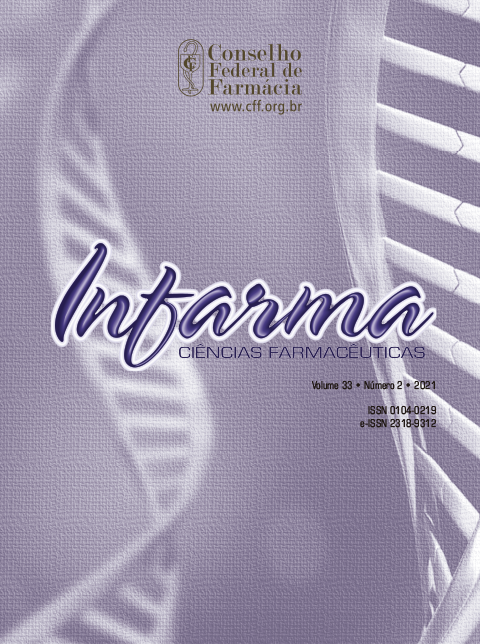MEDICATION RECONCILIATION IN THE CARE UNIT IN A PUBLIC HOSPITAL IN THE SOUTH OF BRAZIL
DOI:
https://doi.org/10.14450/2318-9312.v33.e2.a2021.pp158-166Keywords:
patient safety, medication reconciliation, medication errors, drug interactionsAbstract
One of the strategies used to improve the patient’s safety, mainly in identifying and preventing adverse events related to medicines, is medication reconciliation. Identifying discrepancies between the drugs in use by the patient before hospital admission and the drugs prescription during the hospitalization avoid damages that could be permanent, promoting the patient’s safety. The study aimed to identify, through medication reconciliation, discrepancies, and interactions on patients hospitalized in a public hospital in the South of Brazil. A cross-sectional and descriptive study was performed, based on patients’ interviews concerning the drugs in use before the hospitalization and the drug prescriptions in the hospital. Most of the patients were men, elderly, and with cardiovascular diseases as base pathology. Out of 50 interviewees, 94% have presented at least one discrepancy. Out of 153 discrepant drugs, 66.7% were classified as intentional discrepancies and 33.3% as non-intentional discrepancies. The drugs impacting the cardiovascular system were the most frequent among the discrepancies and possible drug interactions. This study portrays a significant number of discrepancies, whether intentional or not, after the medication reconciliation. The patients with polypharmacy were the ones who presented the highest number of possible drug interactions. Identifying those discrepancies showed the importance of the demonstration of the medication reconciliation and the pharmacist intervention in the prevention of adverse events related to drugs.
Downloads
Published
How to Cite
Issue
Section
License
Authors who publish in this journal agree to the following terms:
- Authors retain the copyright and grant the journal the right of first publication, with the work simultaneously licensed under the Licença Creative Commons Attribution which allows the sharing of work with acknowledgment of authorship and initial publication in this journal.
- Authors are authorized to take additional contracts separately, for non-exclusive distribution of the version of the work published in this journal (e.g. publish in institutional repository or as a book chapter), with acknowledgment of authorship and initial publication in this journal.
- Authors are allowed and encouraged to publish and distribute their work online (e.g. in institutional repositories or on their personal page) at any point before or during the editorial process, as this can generate productive changes as well as increase the impact and Citation of published work (See O Efeito do Acesso Livre ).


